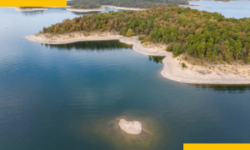My TrekTopia’s Guide to Plan a Road Trip Beyond the Basic
Contents
- 1
- 2 Planning a Fantastic Road Trip
- 3 Keep Yourself Informed
- 4 Embrace the Adventure on Wheels
- 5 Road Trip Essentials for Every Season
- 6 Ideas for Designing Your Dream Road Trip
- 7 Planning a Cross-Country Road Trip
- 8 Hacks to Elevate Your Road Trip
- 9 Capturing the Essence of an Epic Road Trip
- 10 Conclusion
- 11 FAQs
Planning a Fantastic Road Trip
Let’s get you prepared for the Best Road Trip you may have ever taken. Here are a few suggestions I have to assist you in becoming prepared along the journey.

A good road trip begins with a budget. Be realistic about lodging, food, gas, and other activities that you may want to indulge in. Get your figures right about your expenses for your route and adjust according to the data you have worked on. Before you start to drive, planning is fundamental.
You can customize your road trip by using online sources that will help you curate a terrific itinerary. You can join online forums and groups where people share similar interests, such as taking road trips or having discussions. There may be some ideas and sources of information there for you.
Keep Yourself Informed
Keep Information Stay current with maps and the weather. A good atlas is your best friend on the road trip, even in this modern world of digitization. You can keep informed about the weather and roads with sources like the Department of Transport and the National Weather Service. Remember to consider the road conditions and weather forecast. I prefer carrying an atlas and a map with me when I travel.
Get your car prepared and packed like a pro. Get the routine service and maintenance work done for your vehicle. Remember to make a road trip checklist on your phone or in your diary. Remember to double-check essentials like a first aid kit, tool kit, cables, tool kit, flashlights, etc.
Plan your stops ahead of time, but also leave space for spontaneity. Look for beautiful side roads and byways with small charming roadside cafes or attractions. The best trips focus more on the route rather than the destination.
Road trips can always be flawed or accurately planned, which is part of their charm. Pack mindfully with some flexibility to embrace the unexpected detours you may face. Plan well for the people travelling with you.
Embrace the Adventure on Wheels
Since you are ready and prepared to hit the road, I would like to give you some note-worthy tips to optimize your adventure on wheels.

Use apps or radio broadcasts to stay updated on the condition of the roads in real-time. These updates are essential as they ensure that you have a safe and smooth road trip.
It doesn’t matter if you have a GPS or the most updated online app, but nothing beats the magic of having a physical map that provides a broader perspective that lets you uncover hidden gems en route to your destination.
Remember to indulge in roadside cafes. These local cafes enable you to taste their authentic cuisine and meet with other travelers or locals who may provide you with valuable tips for your way.
Pack light and pack-wise. Optimize your packing spaces by using packing cubes that let you pack strategically in every nook and corner of your car storage space. Pack a travel journal, a portable charger for good health, a deck of cards, and a fun playlist. These things make your trip fun and keep your passengers entertained.
Related: Travel Tips for Long Distance Tesla Road Trip
Road Trip Essentials for Every Season
No matter the season, these essentials will ensure smooth sailing on your adventure:
Let me provide some information about the essentials to ensure you’re fully prepared to embark on a road trip regardless of season.
Snow tires prevent your car from slipping or skidding on wet roads. You can’t go wrong with having a few extra warm clothes and an emergency blanket. They are always helpful to have along the winter route. A windshield to swipe off any rain or snow to ensure maximum visibility while driving in winter.
For summers, do carry sunscreen to avoid getting burnt by harsh sunlight. Wear a hat and sunglasses to shield your eyes and face from the sun. Finally, pack a reusable water bottle to stay hydrated and rested during your travels.
You should Spend enough time preparing for your road trip because it can make or spoil your experience. Let the road guide you to a fantastic adventure!
Ideas for Designing Your Dream Road Trip
Are you a solo wanderer planning for a road trip? You can plan a relaxing journey along picturesque coastal routes with ample opportunities to stargaze.
Do you want something fun for your family? Curate a theme road trip around historical monuments, national parks, and fantastic roadside attractions that have something for every family member.
The Great American Road Trip? Go classic! Route 66 beckons or chart your course across the vast American landscape. Plan the Great Classic American Road Trip and plan your way across the wide American area. Route 66 is one scenic route to go on.
Personalize your road trip as you want it. It should have all the components you want for your road trip.
Planning a Cross-Country Road Trip
Take extra care when planning adventures across the country. Let me provide you with a few suggestions that can improve your preparation.
Select a few possible routes. Consider distance, the landscapes you want to experience, and any destinations you wish to include to make your trip the best.
The immense country of the United States of America is home to various climates. Research your routes and pack according to the climates you may experience. Be careful of possible weather extremities you may face in different regions along your journey.
Use booking apps and campground maps to find your perfect stay along the route. Camp out under the stars or stay in modest motels with your loved ones. Depending on your budget, you can indulge in premium accommodation options.
Related: How to Plan a Road Trip
Hacks to Elevate Your Road Trip
After covering the basics of planning a trip, let’s explore some pro tips to take your road trip to the next level.
The most notable, life-long memories are created when you take the most unexpected and spontaneous diversions. Embrace the moment and follow the flow of events. Contribute to scientific research with apps like iNaturalist and eBird, which let you document the vegetation and wildlife. You can be a citizen scientist while on your road trip. It will allow you to add another layer of activity to your road trip, making it an epic road trip.
If you stumble upon a small town known for handicrafts, sign up for a quick workshop and learn a new skill. This is your chance to make a one-of-a-kind souvenir to take home with you.
Capture the moments as you travel along the way. Photography is a fantastic way to record your journey. If money is restricted, you can use the camera on your phone or acquire a decent camera. Sometimes, the best memories are those left uncaptured. Remember to make the most of the road trip and use it to make memories with your loved ones.
Capturing the Essence of an Epic Road Trip
Food is a great way to immerse yourself in the culture. Ditch the fast food chains and search for local diners where you can try out the regional specialties, supporting the local economy simultaneously. You can start chat sessions with random strangers and fellow travelers.

You can exchange tips and recommendations and build long-lasting friendships. Maybe you’ll make a friend for life. I have made many friends who have become part of my life.
While on your road trip, leave the worries of your daily life behind and go offline momentarily. Put away your phone to embrace the fresh air and relaxing atmosphere. Technology is an aid; avoid letting it dictate your life.
Be a responsible citizen and responsibly dispose of your trash. Be careful while exploring landscapes. Do not disturb wildlife or destroy the landscape in any way. Try your best to be more sustainable.
Conclusion
The journey itself is the destination. Get your groove on and buckle up to experience the magic of the roads. With careful planning, eagerness for the adventure, and some helpful tips in this article, you’re fully equipped to curate the best road trip of your life.
There is no right or wrong method for taking a road journey. Customize your experience and let the adventure unwrap its charm! Happy travels!
FAQs
Q: How long should an ideal road trip be?
It’s entirely up to you whether you go on a weekend getaway or a months-long exploration. Plan the duration of your road trip wisely, considering your time constraints, budget, and desired pace of travel.
Q: How do I plan if I’m traveling with a group?
Communication is the key to good planning. Plan together, discuss interests, and be flexible. Allow everyone a chance to choose some stops and activities.
Q: How do I handle car trouble on a road trip?
Basic car knowledge is a lifesaver. Learn how to change a tire and check your fluids. Pack a roadside emergency kit and consider roadside assistance memberships for added peace of mind.
Q: What are some apps that can enhance my road trip?
There are countless apps to elevate your experience. Consider navigation apps like Waze or Google Maps, gas price trackers, campsite finders, and apps for identifying roadside attractions.
Q: Solo travel vs. group travel? Which one is the best?
Solo trips offer freedom and self-discovery, while group adventures bring shared experiences and create lasting memories. You can select the option that best fits your comfort level and travel style.



